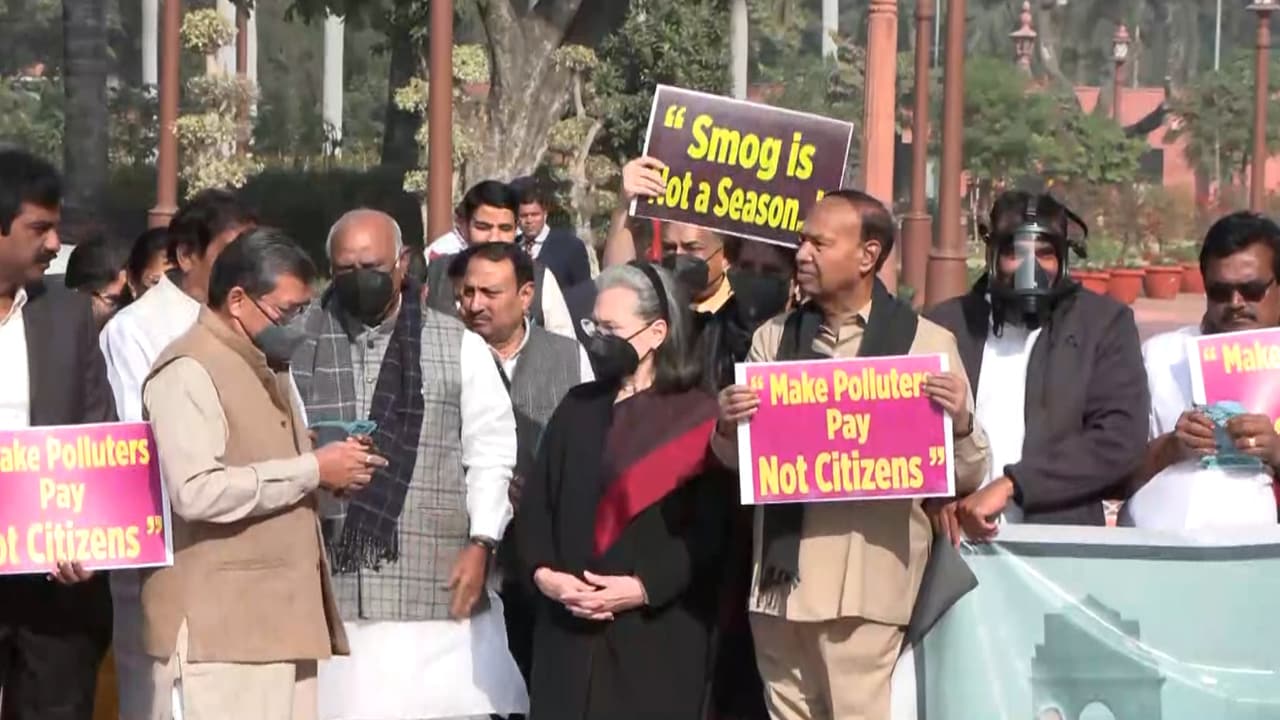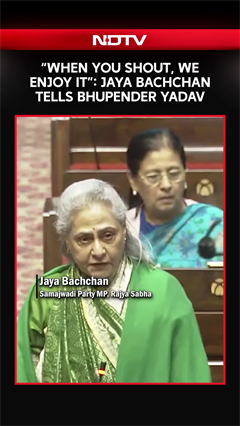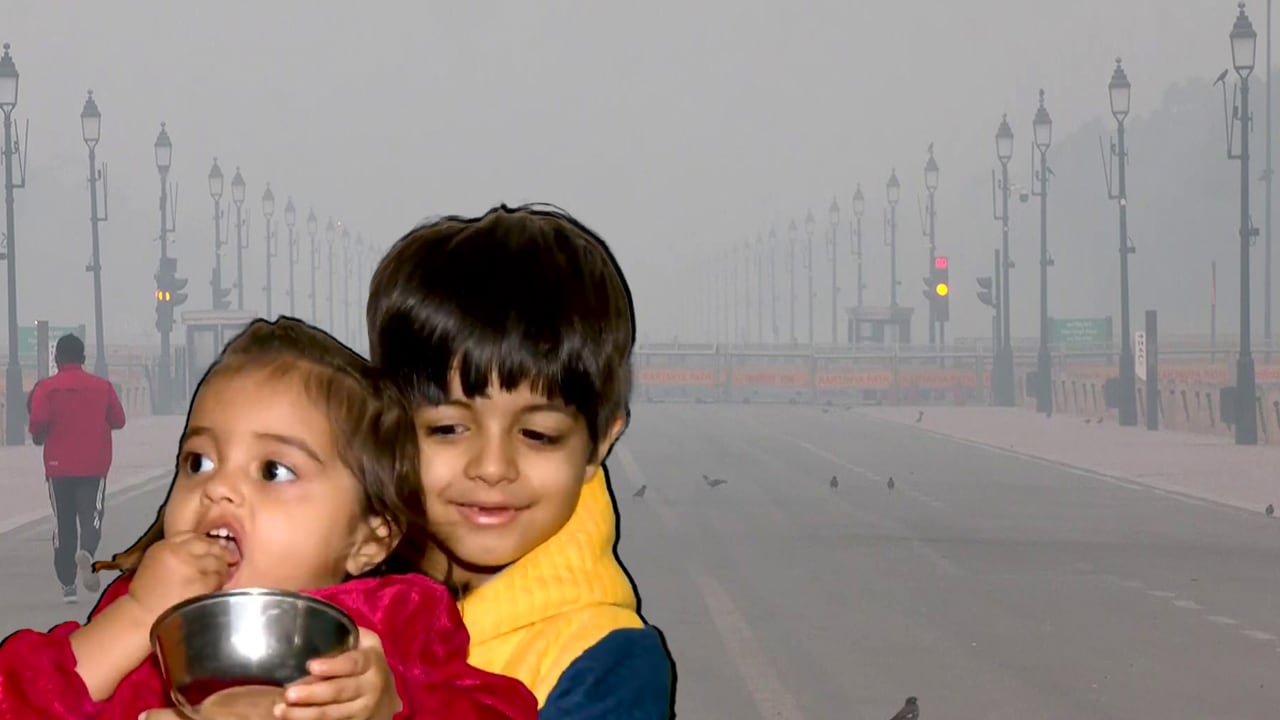- Home/
- Air Pollution May Be Fuelling Rise In Rheumatoid Arthritis Cases In Delhi NCR
Air Pollution May Be Fuelling Rise In Rheumatoid Arthritis Cases In Delhi NCR

Delhi and the National Capital Region (NCR) have long battled choking smog, seasonal spikes in particulate matter, and air quality levels far worse than the World Health Organization (WHO) guidelines recommend as safe. This especially happens around Diwali, when stubble burning and firecrackers add to air pollutions. But now, medical specialists are warning that the menace of pollution may be reaching beyond lungs and heart, to the joints themselves. At the 40th Indian Rheumatology Association conference (IRACON 2025), experts raised the possibility that Delhi's toxic air is contributing to a rise in rheumatoid arthritis (RA) among residents.
Rheumatoid arthritis is a chronic autoimmune disease in which the body's immune system mistakenly attacks the joints, causing swelling, pain, stiffness and gradual joint damage. It is lifelong, with no known cure, only management of symptoms. Traditionally, genetics, ageing and immune dysregulation were considered the primary risks. But growing evidence now points to environmental triggers such as air pollution as contributing factors.
In India, the prevalence of RA is estimated at about 1 % of the adult population. In highly polluted zones like Delhi, this baseline risk may be magnified. With annual average PM2.5 levels frequently exceeding 100-150 ug/m3 (much above WHO safe limits), residents are chronically exposed to a cocktail of pollutants that can spark systemic inflammation. Although definitive long-term studies are still emerging, observational and mechanistic research point to a plausible connection between air pollution and autoimmune disease onset.
At IRACON, rheumatologists noted that patients from polluted localities are presenting RA symptoms even without a family history or established genetic predisposition. They warned that the surge is not just of milder disease, but of more aggressive disease patterns in younger adults. The question now being asked is, how strong is the evidence, what mechanisms might explain this, and what can individuals and policy makers do to counter this trend?
What Is The Link Between Pollution And Autoimmunity?
Many studies have shown that there is a link between pollution and autoimmune diseases like rheumatoid arthritis. Here are some details you should know about:
Pre-Clinical Autoimmunity In Polluted Zones
A cross-sectional study from AIIMS screened 1,500 long-term Delhi residents (living in the area for over 10 years), using proximity to busy roads as a proxy for pollution exposure. Among 500 healthy individuals, 18 % showed autoantibody positivity (e.g., antinuclear antibodies or rheumatoid factor), and 68 % had elevated inflammatory markers. Those who lived within 200 meters of major roads had significantly higher rates of autoantibodies compared to those living farther away.
This suggests that polluted environments may prime immune dysfunction well before clinical disease manifests, by promoting low-level immunity misfiring.
Pollutants And Disease Activity
A study on rheumatoid arthritis patients in Kuwait (linked to ambient air pollution data) found that higher levels of SO2 and NO2 were associated with worse disease activity scores (DAS-28). This supports the notion that certain gaseous pollutants may worsen autoimmune inflammation or flare disease activity. In other regions, studies have found that early-life exposure to air pollution may elevate the lifelong risk of RA, strengthening the idea of a long latency between exposure and manifestation.
Mechanistic Pathways: How Pollution May Trigger RA
Oxidative stress and inflammation: Fine particulate matter (PM2.5) carries reactive chemicals that induce oxidative stress in tissues, triggering inflammatory signalling pathways, which can dysregulate immune cells.
- Immune modulation and autoantibody generation: Pollutants may alter immune tolerance, lead to misrecognition of self tissue, and promote autoantibody production (e.g. anti-nuclear antibodies) prior to clinical disease.
- Epigenetic and genetic interactions: Some studies using Mendelian randomisation approaches identify that certain genes linked to immune control may be more susceptible to modulation by pollutants, increasing the risk of autoimmune phenomena.
- Local joint microenvironment effects: Pollutants that penetrate the circulation may reach joint tissues, promoting local inflammation, synovial irritation, and recruitment of immune cells.
Air Pollution And Rheumatoid Arthritis Link In Delhi-NCR
Several reports from IRACON 2025 suggest that RA patients from polluted areas are showing onset earlier, with more severe joint involvement, even in absence of family history. It is being flagged as a public health concern, given that RA is irreversible and associated with disability, medical costs, and reduced quality of life.
Experts are voicing that Delhi, often among the world's top polluted cities, may be becoming a "hotspot" for pollution-associated autoimmune disease risk. But caution is also emphasised as correlation does not equal causation. Many rheumatologists call for longitudinal cohort studies in heavily polluted regions to track individuals over time, controlling for genetics and lifestyle, to confirm the causal link.
What Can You Do To Prevent Pollution-Related Autoimmune Diseases?
- Reduce pollution exposure: Stay indoors when air quality is severely poor, use air purifiers, and use N95/KN95 masks when outdoors during smog peaks.
- Anti-inflammatory lifestyle: Consume antioxidant-rich foods (fruits, vegetables, omega-3 sources), maintain regular physical activity, avoid smoking, and manage stress.
- Early screening: If you experience persistent joint pain, stiffness, swelling especially in symmetrical joints (hands, wrists, knees), consult a rheumatologist early.
- Avoid additive risks: Obesity, smoking, and infections can further aggravate RA risk, so controlling them helps reduce overall autoimmune burden.
While the evidence is still evolving, a compelling body of research and emerging clinical observations suggest that Delhi-NCR's toxic air may not just be a respiratory or cardiovascular risk, and it might also be silently contributing to the rise of rheumatoid arthritis. Pollution-triggered systemic inflammation, oxidative stress, immune misfiring and genetic susceptibility together may shift previously healthy individuals toward autoimmune disease.
Given the chronic, disabling nature of RA, prevention and early intervention are key. For those living in high-pollution zones, combining exposure minimisation, healthy lifestyles, and medical vigilance is prudent. Meanwhile, policy action to reduce emissions and invest in urban health infrastructure is urgent. This potential link reinforces a broader lesson that clean air is not just an environmental goal, but a foundational public health measure that may protect not just lungs and hearts, but immune systems and joints too.
Disclaimer: This content including advice provides generic information only. It is in no way a substitute for a qualified medical opinion. Always consult a specialist or your own doctor for more information. NDTV does not claim responsibility for this information.
also read
"Mad Traffic And Honking": Kanpur Man Shares Challenges He Faced After Moving Back To India From Ireland
Edited by Astitva RajWhere India Found Clean Air This Week: Top 5 Cities Ranked
Edited by Srishti Singh SisodiaWhich Are India's Top 10 Polluted Cities? UP Accounts For 6 On The List
Press Trust of India
Latest Stories
- Edited by Astitva Raj | Sunday December 07, 2025
His post clearly explains the various daily challenges he faced after moving to India from Ireland.
- Edited by Srishti Singh Sisodia | Sunday December 07, 2025
These cities serve as examples of how natural surroundings and effective pollution control can contribute to cleaner air.
- Press Trust of India | Sunday December 07, 2025
Ghaziabad was the most polluted city in India in November, with a monthly average PM2.5 concentration of 224 microgram per cubic metre and air quality remaining above the national standards on all 30 days, according to a new analysis.
- Reported by Ishika Verma | Saturday December 06, 2025
New Delhi: Two days after Chief Minister Rekha Gupta held a high-level review meeting, the Delhi government on Saturday formally notified the constitution of a new Expert Group on Air Pollution Mitigation and a High-Level Implementation Committee.
- Saturday December 06, 2025 , New Delhi
Delhi Chief Minister Rekha Gupta on Thursday claimed that the capital had "celebrated Diwali and maintained air quality."
................................ Advertisement ................................
Latest Videos
Opinion
Blog | Well Done, Delhi. You've Turned Lung Sacrifice Into A Badge Of HonourSaikat Kumar Bose
Monday November 10, 2025Till some years back, Delhiites would ask angry questions to those in power about the capitals annual tryst with toxic air. This has changed. Those in the driving seat dont see the need to answer now.
Opinion | Why Indians Have Just Given Up On Air Pollution CrisisTanushree Ganguly
Friday December 20, 2024While some may argue that people in Delhi are now more aware of air pollution than they were a decade back, my rebuttal would be that awareness does not mean that people are concerned.
Opinion | You Must Outrage Over Filthy Air More Than Once A YearJyoti Pande Lavakare
Tuesday December 10, 2024Delhi welcomed us with monsoon rains and mangos. We were home. Fast forward a couple of years, in the winter of 2012, I found myself in denial about something other parents, mostly expats, were calling toxic air.
Opinion | Delhi's Air Pollution Situation Is Like A Bad MarriageNishtha Gautam
Friday November 22, 2024On a good day, such as today, the AQI reading in Delhi is 407. We are jubilant at the sickly sunshine trickling through the slightly dissipated smog. At least its not 1600.
दिवाली... पराली... सियासी जुगाली!Ashwini kumar
Monday November 18, 2024दिल्ली-एनसीआर में प्रदूषण का समाधान तो आज तक मिला नहीं. हर साल चिंतित होकर हम-आप सांसों की तकलीफ के साथ-साथ दिल और ब्लड प्रेशर के मरीज भी क्यों बनें?


















